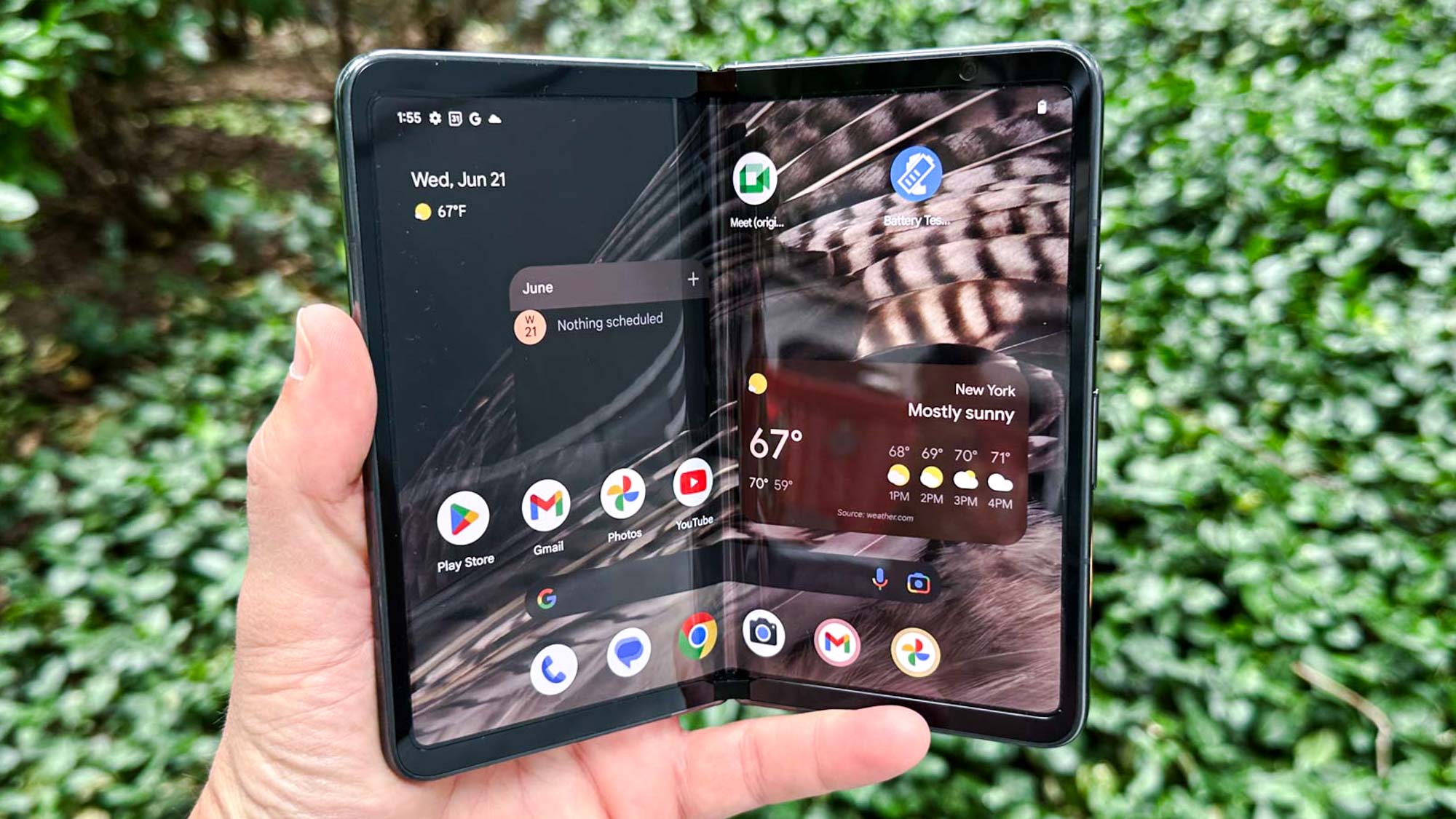
Rumor has it that the Google Pixel Fold 2 could be set for a performance boost. A boost that could see it solve one of the original Pixel Fold’s biggest issues, that was so glaring that it put me off checking out the first Google foldable for myself.
The Google Pixel Fold launched last June, and came powered by the Tensor G2 chipset. That’s the same chip that debuted the previous year in the Pixel 7 series, and was set to be superseded a few months later by the Pixel 8’s Tensor G3. But the Pixel Fold 2 may not fall into the same trap, with the rumors claiming it’ll skip over the Tensor G3 in favor of the Tensor G4.
Assuming the foldable still launches sometime this year, that can only be a good thing. Here’s why.
The Pixel Fold is too expensive to run on old hardware
Like so many other foldable phones, the Google Pixel Fold is not a cheap device. $1,799 is a lot of money, especially for a smartphone, and if you’re forking out that much cash you’d better hope you’re getting something with top-of-the-range specs. Unfortunately the Tensor G2 was not that.
This is not a slight on the Tensor G2 and its seeming lack of performance power. There’s more to life than benchmarking tests after all. Just that the chipset had already been around for a while when the Pixel Fold was actually released — eight months, in fact. It also arrived a month and a half after the Pixel 7a, which used the exact same chip.
Granted, eight months is a similar length of time to what we saw between the Samsung Galaxy S23 and Galaxy Z Fold 5 — both of which had a Snapdragon 8 Gen 2 chipset of some sort. The difference is that the Tensor range is built for a very specific purpose than Qualcomm’s more multi-purpose chips. That means they come packing a bunch of chip-exclusive features that you tend not to see with a Snapdragon rival.
Phones running a Tensor G2 had all the same AI features that weren’t available on older models, like Photo Unblur. Likewise phones with a Tensor G3, like the Pixel 8, offered features that were incompatible with the G2, like Audio Magic Eraser or Magic Editor.
If you’re being asked to pay $1,799 for a new phone, you’d hope that it has the best of the best. That wasn’t the case with the Pixel Fold. Not only was the Tensor G2 on the road to being replaced, with no hope of forward compatibility with Tensor G3 features, it was rocking the same middling performance as a phone three and a half times its price.
Skipping the G3 makes perfect sense — provided the Pixel Fold 2 arrives this year
Let’s say, for the sake of argument, that the Pixel Fold 2 launches this June. Since the Tensor G4 and Pixel 9 series aren’t expected to arrive until early October, it would mean the Pixel Fold 2 would come powered by the Tensor G3 by default.
That essentially puts the phone in the exact same position as its predecessor. Using a chip that debuted the previous year, and guaranteeing it misses out on the latest and best features coming out of Google HQ.
The problem is that Pixel Fold is an impressively premium product, but it’s not the big name of the Pixel line-up. Not after a single generation, anyway. But this doesn't mean we couldn't see Google launch the phone a little later.
Rather than sticking to the 12-month release cycle, Google could launch the Fold alongside the Pixel 9 series. That way the Fold 2 could get the benefit of a more advanced Tensor chipset this year, but without stealing the thunder from Google's flagship.
Better still, the fact the Fold 2 would be on par with the Pixel 9 from the get go could work in Google's favor. Not just in terms of being able to market three powerful new phones, but also because close launches could have the trio growing together over the course of 2025.
Google is notable for its regular Pixel feature drops, but typically the best updates are reserved for the newest phones — leaving older hardware to gather dust. Close release times means Pixel Fold 2 buyers could potentially have a stream of updates to look forward to in the months after release day.
On the flip side, delaying the Pixel Fold 2 beyond the end of this year would defeat the purpose of launching with the Tensor G4 altogether. If anything it just meant Google wasn’t ready to release a second foldable a year after the Pixel Fold’s debut.
So the success of the whole “skipping Tensor G3” situation is all going to hinge on when the phone actually arrives.
Bottom line
We know that Google isn’t giving up on foldable phones, which means we will be seeing a successor to the Pixel Fold at some point. The problem is we don’t know when that will be, or what form the second generation foldable Pixel will take. After all Google did express interest in making a clamshell-style foldable akin to the Galaxy Z Flip 5 or Motorola Razr+.
Google admitted that it took its time with the Pixel Fold, ensuring that it had a strong device before revealing it to the world. Which was a smart move, and seemingly paid off given how well-received the Pixel Fold was. But that may lead to Pixel Fold 2 delays, as Google fine-tunes the new model. In short, there’s no guarantee that it will arrive this year — either at I/O in May or alongside the Pixel 9 in the fall.
But if the Pixel Fold 2 does arrive this year, then Google would benefit from holding back by a few months, just to ensure that the phone gets the best possible chance at the title of best foldable phone in an ever-competitive market.







